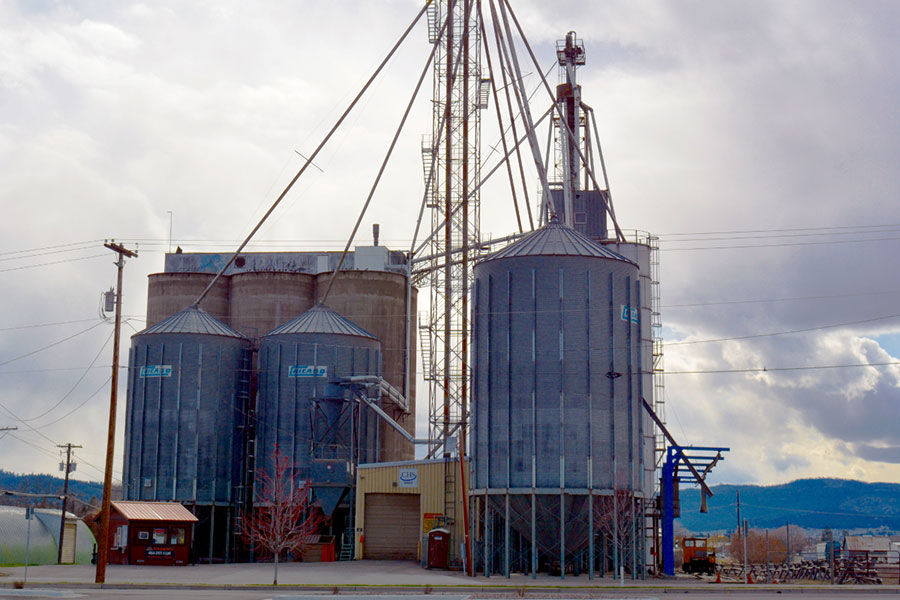Oftentimes, commercial properties have a history just as intriguing as their more domesticated counterparts. And one particular commercial spot, which towers above others in historical regard (and quite literally), is the Kalispell Flour Mill Co., formerly at Sixth Avenue West and Railroad Avenue.
The flour mill was built in 1909 — about five years after the Great Northern Railway had relocated its operations to Whitefish. Many perceived the relocation of the railroad as the doom of Kalispell. Many declared that grass would soon be growing again in the middle of the dirt streets and sidewalks. Yet Kalispell had too much economic diversity and vitality. The town flourished, as did the flour mill.
Indeed, 1909 was a progressive year. It was the year President Taft began his relatively unremarkable presidency. However, locally it was a far more remarkable moment, as the Kalispell Townsite Company extended Main Street to the north “over the hill in the buffalo pasture” and opened up the “north side” of town to more conspicuous development.
Incidentally, the building of the flour mill not only heralded similar progress and development, it was also a declaration of a prosperous future. The building of the mill spoke of enterprise, of permanence, and of hope for many local farmers, merchants, and households. Once completed, the mill was a place where long-forgotten trades were plied, such as elevator man, grain buyer, miller, and teamster (literally, as in one who drove a “team of horses”). And it was where generations earned a living, whether for their wages or wheat.
Unfortunately, despite the success and abundant capacity of the mill, hardly anything remains of it. The original grain elevator (made of wood) was replaced long ago. And the original (brick) mill is likewise all but a memory. However, the six-round concrete storage tanks built in 1909 still stand (although surrounded by the much newer metal silos of the CHS Kalispell Grain Elevator/Feed Store). So, forget the metal; it’s the concrete. That is, the newer metal silos surround the original concrete ones of the Kalispell Flour Mill Co.
It may be a bit of a challenge to see. Yet a bigger challenge may be had in trying to imagine how Spring Creek was diverted into a pond to provide water for mill operations, including the wood-fired boilers. Incidentally, the once free-flowing creek and channel were back-filled in 1935.
Along with the physical history of the mill, some business history seems a bit lost in time as well. For example, few recall that in 1928 the Kalispell Flour Mill Co. merged with four other companies and formed the largest milling company in the world: General Mills, Inc. Indeed, the town of Kalispell — and Flathead Valley farmers — were part of the flour trade on the national and international scale.
However, the Great Depression, and price controls and rationing during WWII took a toll on the flour industry. Ultimately, General Mills, Inc. closed down the flour mill in 1948. The next several years didn’t bode well either. In 1952, crowds watched in awe as the mill and grain elevator were engulfed in flames. Rebuilding was deemed too costly and the mill was torn down the following year.
And while an icon of Flathead Valley history has been reduced to a half-dozen monoliths of concrete, it’s nonetheless a landmark worthy of reflection. So the next time you’re around the intersection of Fifth Avenue and Center Street (or stop by Copper Mountain Coffee) look up and you’ll see six towering artifacts of one of Kalispell’s most important commercial/agricultural enterprises.
